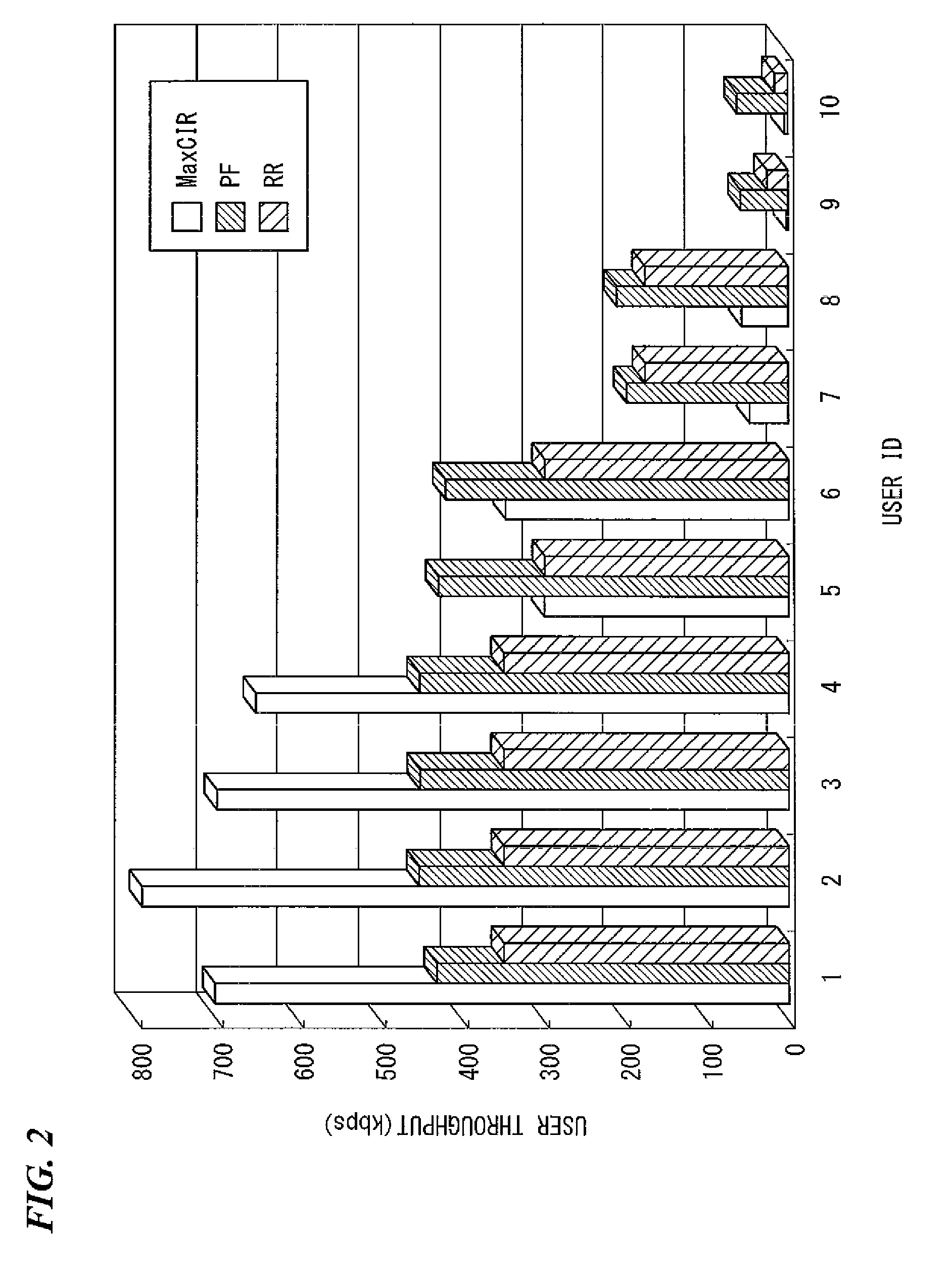Mobile communication system, mobile station device, base station device, and mobile communication method
a mobile communication system and mobile station technology, applied in the field of mobile communication systems, can solve the problem that data transmission to/from the base station device cannot be executed on the mobile station device side, and achieve the effect of reducing gap generation processing and power consumption
- Summary
- Abstract
- Description
- Claims
- Application Information
AI Technical Summary
Benefits of technology
Problems solved by technology
Method used
Image
Examples
first embodiment
[0092]A mobile communication system according to the present invention is explained.
[0093]FIG. 1 is a schematic view showing an example of a radio frame configuration in E-UTRA downlink based on 3GPP. As shown in FIG. 1, the horizontal and the vertical axes indicate time and frequency, respectively. The downlink radio frame is a bundle of subcarriers, and includes two-dimensional radio RBs (resource blocks) defined by a frequency bandwidth Bch and a TTI (Transmission Timing Interval). BW, Bch, Bsc, and Ts represent a downlink frequency bandwidth, a resource-block frequency bandwidth, a subearrier frequency bandwidth, and an OFDM symbol length, respectively.
[0094]As shown in FIG. 1, CPICH (Common Pilot Channel) is mapped to the head of each TTI, and BCH (Broadcast Channel) and SCH (Synchronization Channel) are mapped to the head of each radio frame. A rest part of each resource block is used as a TCH (Traffic Channel), and mapped to each mobile station device using AMCS.
[0095]Upon th...
third embodiment
[0160]Hereinafter, a mobile communication system according to the present invention is explained. In the present embodiment, a gap generation period in the active mode is controlled for Intra-RAT-HO (and Inter-Freq-HO), Inter-RAT-HO (and Inter-Freq-HO), and Intra-RAT-HO (Intra-Freq-HO).
[0161]As explained in the first embodiment, Gap_Interval that is the parameter for controlling the gap generation period in the measurement mode is set for Intra-RAT-HO (and Inter-Freq-HO), Inter-RAT-HO (and Inter-Freq-HO), and Intra-RAT-HO (and Intra-Freq-HO) in the present embodiment.
[0162]Although a value that is longer than the gap section (e.g., Gap_1 and Gap_2) is set as Gap_Interval to enhance the packet scheduling efficiency and the power consumption of the mobile station device, the gap generation period in the measurement mode becomes longer due to the setting of Gap_Interval. In other words, the gap generation frequency becomes smaller. Due to the longer gap generation period, the periphera...
PUM
 Login to View More
Login to View More Abstract
Description
Claims
Application Information
 Login to View More
Login to View More - R&D
- Intellectual Property
- Life Sciences
- Materials
- Tech Scout
- Unparalleled Data Quality
- Higher Quality Content
- 60% Fewer Hallucinations
Browse by: Latest US Patents, China's latest patents, Technical Efficacy Thesaurus, Application Domain, Technology Topic, Popular Technical Reports.
© 2025 PatSnap. All rights reserved.Legal|Privacy policy|Modern Slavery Act Transparency Statement|Sitemap|About US| Contact US: help@patsnap.com



